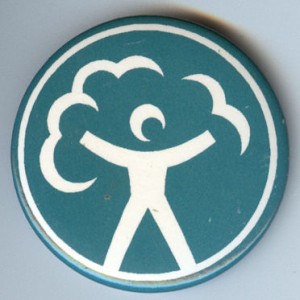
Photo by Jim Linwood
The concept of measuring talents and accomplishments in the form of online “badges” is gaining steam.
And a California university is poised to play a key role in their development.
The badge idea, which U.S. Secretary of Education Arne Duncan last month called a “game changing strategy,” gives weight and legitimacy to the notion that learning often takes place outside traditional classroom settings.
A digital badge is an online record of accomplishments indicating that the badge earner has acquired a skill, language, technical ability, degree or other aptitude that may go unnoticed or underappreciated on a standard resume and would not necessarily be reflected in grades or scores on standardized tests.
Available to people of all ages, from kindergartners on up, the badges would offer a new way of looking at aptitudes, credentials, and job skills.
Last month the John D. and Catherine T. MacArthur Foundation launched a $2 million competition calling for designers, technologists, and organizations to submit proposals on how and where digital badges could be implemented, as well as designs for their appearance and operation.
The competition will be administered by the University of California Humanities Research Institute in Irvine, in collaboration with Duke University’s John Hope Franklin Center. The deadline for the first round of the contest is November 14.
“Badges make the accomplishments and experiences of individuals, in online and offline spaces, visible to anyone and everyone, including potential employers, teachers, and peer communities,” said David Theo Goldberg, director of the UC Humanities Research Institute, a major recipient of MacArthur funding.
At the announcement of the competition U.S. Secretary of Education Arne Duncan called the badges a “game changing strategy.”
The aim is to develop badges and a badging standard that could be used by institutions, corporations, schools, universities, and nonprofits nationwide. So far, the foundation has developed partnerships with a number of prominent institutions interested in promoting the badges concept, including Microsoft, NASA, and the American Library Association.
And the United States Armed Forces has also shown interest in the system as a way to help veterans transition from active duty to civilian life by showcasing skills honed during deployments. In fact, the Department of Education is joining with the Department of Veterans Affairs to offer a $25,000 award for a badge prototype that will help veterans get jobs.
Qualifications beyond Test Scores
The idea of digital badges has “multiple origins,” said James Gee, a professor of literacy studies at Arizona State University and one of the first proponents of badges as an alternative to the standard college transcript.
The notion stems largely from the video game industry, said Gee, where players earn achievement badges as they move up levels in a game. Researchers found badges motivated kids to keep playing.
While Gee and others were pondering this idea, in 2007, Eva Baker, a professor at the University of California, Los Angeles, gave the presidential address at the American Educational Research Association titled “The End of Testing.” In it, she proposed that educators start thinking seriously about “qualifications” beyond student test performance.
“My image of a qualification is validated accomplishment, obtained inside or outside school. A qualification means simply that, at various levels of challenge, a student has attained a certified, trusted accomplishment … Each qualification is not a new test, but an integrated experience with performance requirements. It might look like a course, or a collection, or a musical or sports performance.
But these two streams of thought only converged within the last year, Gee said, when educators matched the video game notion of badges with Baker’s idea of alternative qualifications.
“There wasn’t much uptake at the beginning,” said Gee, who first pitched the digital badges idea in 2007 to the MacArthur Foundation. “The crisis in colleges, the fact that people wanted to get around [the] ‘No Child Left Behind’ [Act], and the idea of having credentials you can trust were some of the reasons why it all came together at this moment.”
Recruiters might need convincing. Jennifer Slippy, a partner at Six Degrees Network, a San Francisco employment agency, said college transcripts or resumes are still the gold standard when hiring.
The digital badge idea “seems really weird,” she said. “I could see some of my investment clients going ‘What?’ They’re not going to be that into it.”
Budding University Interest
Most universities are likely to express skepticism of the project, at least in part because it runs the risk of undermining traditional forms of credentialing. Perhaps not surprisingly, P2P (peer-to-peer) University, a free online school, has embraced digital badging as a way to encourage new credentialing methods.
And Gee is pushing for the use of badges at Arizona State where he teaches. “We’re playing with the idea of implementing both a transcript as well as a badge system that could help you specify a major,” said Gee. “There’s no reason you can’t have different ways of learning.”
Validation Okay, but Acceptance?
The goal is to develop one unifying infrastructure so that participating institutions will use the same badge templates. To do this, web browser Mozilla is taking the lead. Also with help from the MacArthur Foundation, Mozilla’s Open Badges Project will create free technology available to institutions and individuals to grant and receive badges
Even proponents of the badging system say it is too early to predict the extent to which it will supplement traditional credentialing systems, or even replace them. “We’re experimenting with whether this is an effective mechanism,” UC Irvine’s Goldberg said.
At the same time, he said, “learning takes place all around us all the time, and it’s largely overlooked. Digital badging becomes a way in which to surface, recognize, and reward that learning.”
For more on digital badges, see this background report.
To get more reports like this one, click here to sign up for EdSource’s no-cost daily email on latest developments in education.